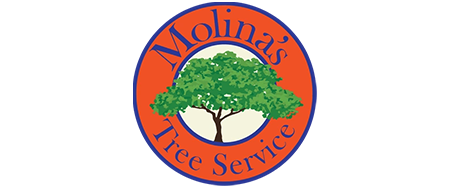
Every homeowner desires a picturesque landscape, where each detail creates harmony and visual appeal. However, many forget proper maintenance. Tree crown reduction techniques provide both safety and beauty, making them essential for thriving trees. These methods allow light to filter through, reduce storm risks, and manage size without harming natural elegance. Therefore, by understanding the right approach, you ensure your trees stay healthy, safe, and stunning.
Tree Crown Reduction: A Comprehensive Overview
Tree crown reduction selectively removes branches to reduce spread and height while preserving natural form. Unlike topping, this process uses precise cuts that protect the tree’s structure. With the right approach, you increase sunlight, airflow, and resilience against storms. Thinning cuts remove small branches, while heading-back cuts shorten length. Consequently, both techniques ensure balanced growth and long-term vitality.
Importance of Proper Tree Maintenance for Your Landscape
Healthy trees require more than leaf cleanup. Proper maintenance prevents falling limbs, curbs disease, and enhances design. Moreover, a well-maintained tree boosts curb appeal and home value. Regular pruning, especially with tree crown reduction methods, manages tree size while protecting beauty. In addition, these practices allow lawn plants to flourish and improve light penetration. As a result, each tree supports the overall landscape vision.
- Reduce risks of falling branches
- Encourage healthy growth patterns
- Support lawn and plant development
For professional support, explore our tree trimming services.
Factors to Consider Before Initiating Tree Crown Reduction
Before pruning, identify species, growth habits, and overall health. Some trees tolerate pruning better than others. Timing matters—late winter or early spring usually offers best results. However, always check for hazards like power lines or nearby buildings. Follow local regulations to ensure compliance. Thus, your tree crown reduction techniques remain safe, effective, and responsible.
- Identify tree type and adaptability
- Assess age and overall health
- Choose correct season for pruning
Assessing the Health of Your Trees Before Pruning
Check bark for cracks, fungi, or oozing sap, which signal problems. Look for pests, deadwood, or weakened branches. For example, evaluate roots for compaction or waterlogging. Health checks guarantee safer pruning and faster recovery. When uncertain, seek advice from an arborist. Consequently, professional insights can ensure your crown reduction practices are applied with precision.
Essential Tools and Equipment for Tree Crown Reduction
Safety equipment is vital: hard hats, gloves, and sturdy boots. For elevated tasks, use harnesses and ropes. Cutting tools include loppers, saws, and pruners, while chainsaws manage larger branches. Moreover, keeping tools sharp and clean prevents disease spread. Prepared equipment ensures efficiency and safe execution of tree crown reduction techniques.
- Protective gear
- Reliable ladders or platforms
- Sharp cutting tools
Step-by-Step Guide to Safely Reducing Tree Crowns
First, clear a safe work zone. Remove deadwood and crossing branches to reduce weight. Next, focus on reduction cuts near lateral branches, always outside the branch collar. Limit live foliage removal to 30%. Step back often to review balance. In this way, your tree crown reduction techniques will ensure safety and strong results.
Tips for Achieving Aesthetically Pleasing Results
Maintain balance and silhouette. Avoid large gaps by thinning evenly. Preserve the central leader and respect sightlines. On the other hand, shape trees to complement the home and garden views. Subtle tapering enhances light flow and layered effects. When design meets precision, crown reduction methods elevate both appearance and health.
Post-Pruning Care: Ensuring Tree Health and Recovery
After pruning, water deeply but infrequently. Apply mulch around roots, leaving space near the trunk. Monitor cuts for pests or decay. Avoid fertilizing immediately; allow natural healing. If needed, brace limbs for support. Finally, with attentive care, your tree crown reduction practices deliver lasting benefits.
Common Mistakes to Avoid During Tree Crown Reduction
Over-pruning is dangerous, leaving trees weak and exposed. Never top trees, as it harms structure. Always cut outside the branch collar for better healing. In addition, avoid dull tools and random trimming, which harm symmetry. Plan carefully, and your crown reduction methods will succeed without setbacks.
Frequently Asked Questions
What is tree crown reduction?
It is the selective removal of branches to reduce tree height and spread while keeping balance and health intact.
How often should crown reduction be done?
Most trees benefit from crown reduction every three to five years, depending on species and growth conditions.
Is crown reduction safe for all trees?
Not every tree adapts well. Nevertheless, consult an arborist to determine if your species can safely handle crown reduction.
What is the best season for crown reduction?
Late winter or early spring is ideal, as trees experience less stress and wounds heal more quickly.
Should I hire professionals for crown reduction?
Yes. Professional arborists ensure safety and apply correct tree crown reduction techniques, avoiding damage and unnecessary risks.
Transforming Your Landscape with Expert Tree Care
When applied regularly, professional crown reduction enhances both safety and beauty. Healthy, well-maintained trees elevate landscapes and increase property value. For trusted results, consider tree trimming in Simpsonville. Explore our complete range of services or reach out via our contact page to begin your landscape transformation today.
